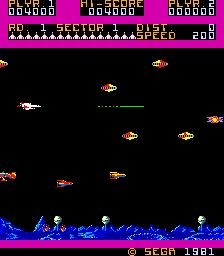

The success of those games eventually forced Nintendo to join the ESRB. The rating system allowed Sega to ship games with little to no censorship and gave it a competitive edge when the same game was released by Nintendo. The controversy over games such as Mortal Kombat in the United States forced Sega to create the first content rating system for video games, the Videogame Rating Council, rather than have the games heavily censored. Several add-ons were created including the Sega Mega-CD/Sega CD and Sega 32X which extended its capabilities. The Sega Genesis was Sega's most successful console though Sega has never released a total sales figure quote. The console began production in Japan in 1988 and ended with the last new licensed game being released in 2002 in Brazil. Two years later, Nintendo released the Super Nintendo Entertainment System, and the competition between the two would dominate the 16-bit era of video gaming. The Sega Genesis was the first of its generation to achieve notable market share in continental Europe and North America, where it competed against a wide range of platforms, including both dedicated gaming consoles and home computer systems. The Sega Genesis is Sega's third console and the successor to the Sega Master System with which it has backward compatibility when the separately sold Power Base Converter is installed. The reason for the two names is that Sega was unable to secure legal rights to the Mega Drive name in North America. It was originally released in Japan in 1988 as Mega Drive ( メガドライブ, Mega Doraibu ?), then in North America in 1989 as Sega Genesis, and in Europe, Australia and other PAL regions in 1990 as Mega Drive. The Sega Genesis, also known as Sega Mega Drive, is a fourth-generation video game console developed and produced by Sega. Sonic the Hedgehog 2 (pack-in), 6 million

Sonic the Hedgehog (pack-in), 15 million Other variations are pictured under Variations belowĮstimated from 37.4 to over 41.9 million


 0 kommentar(er)
0 kommentar(er)
